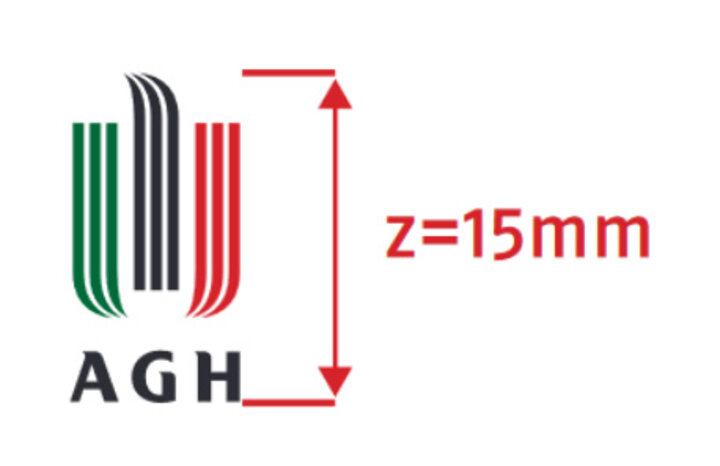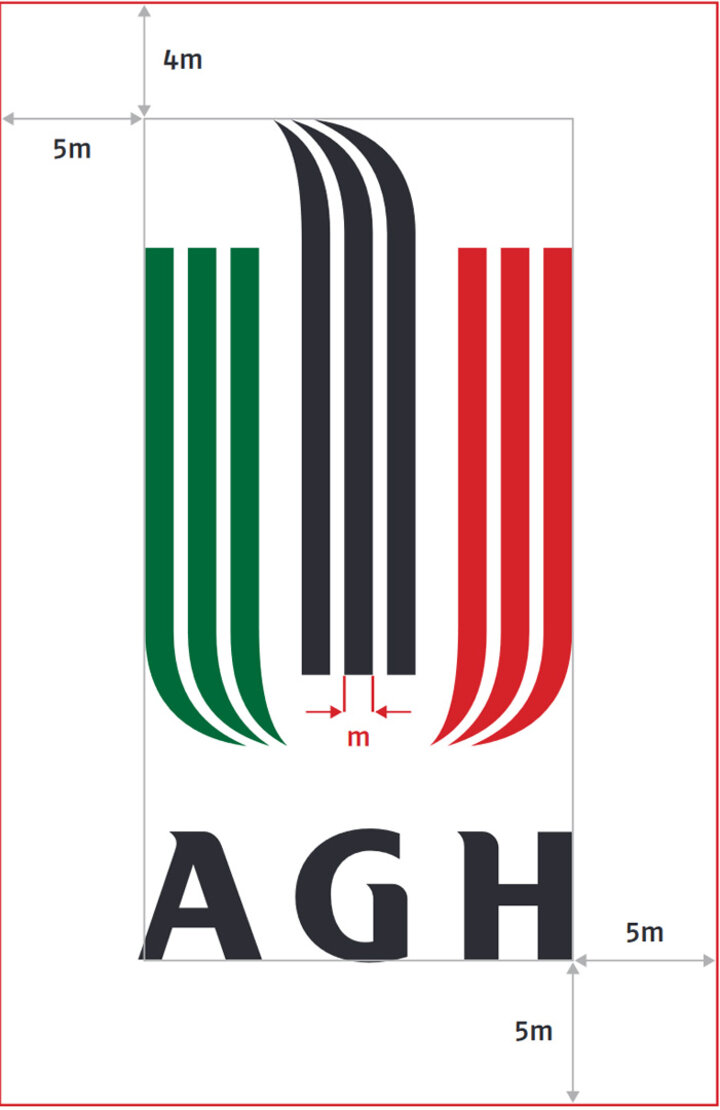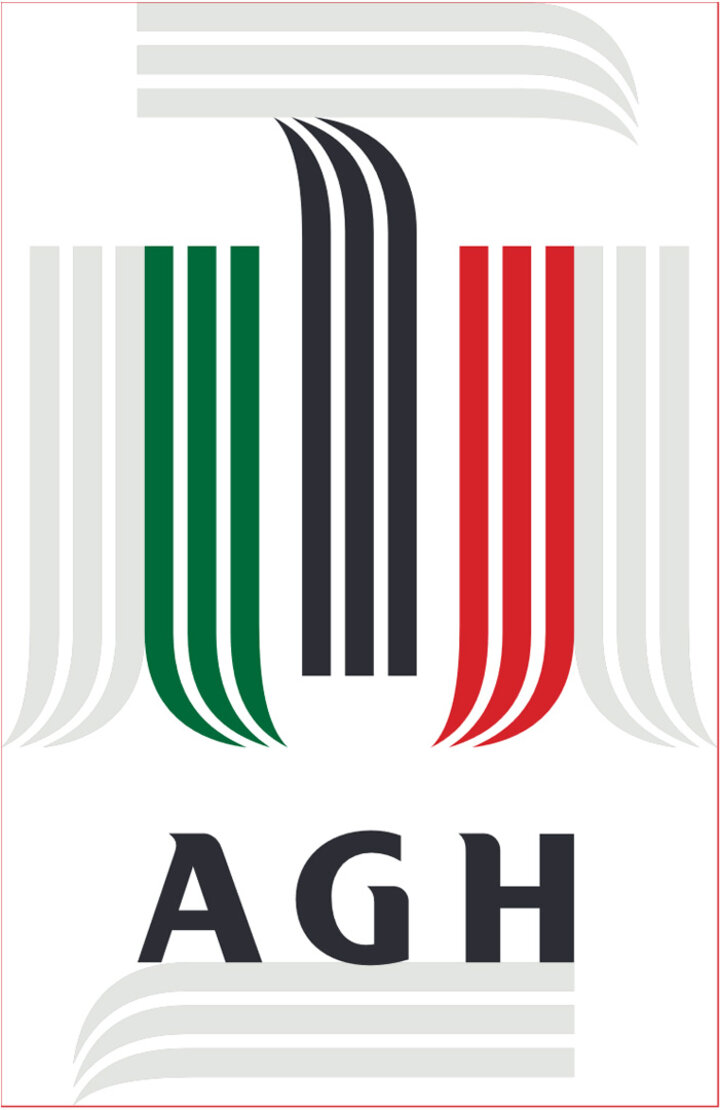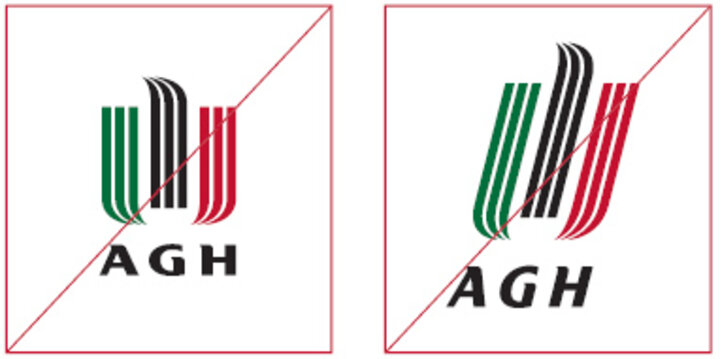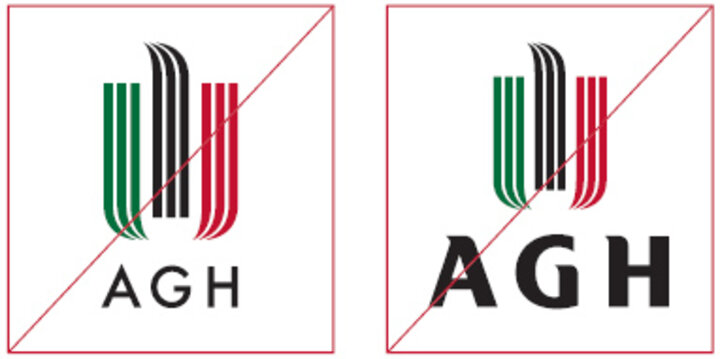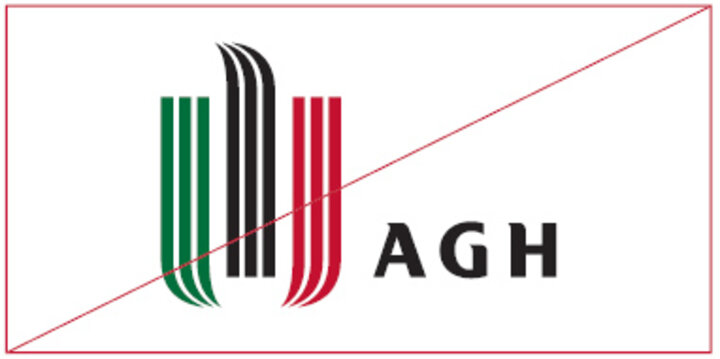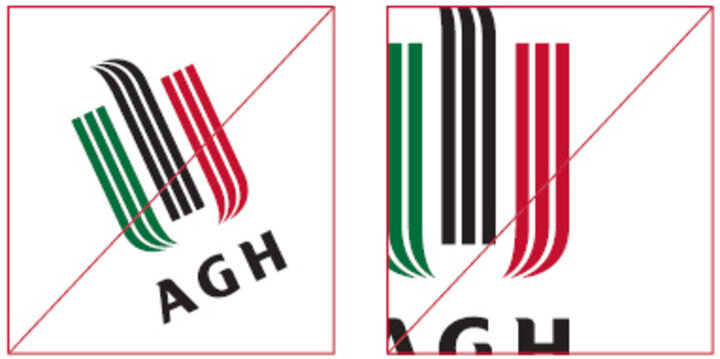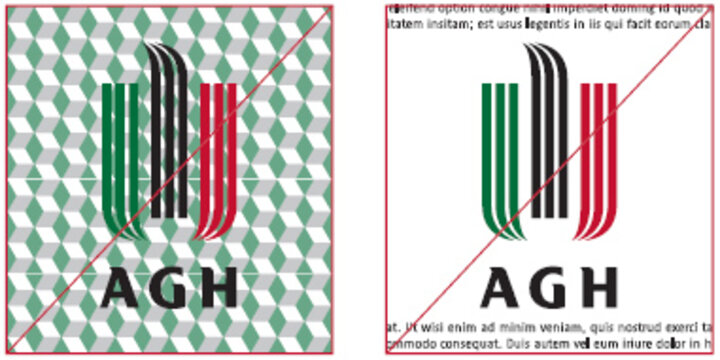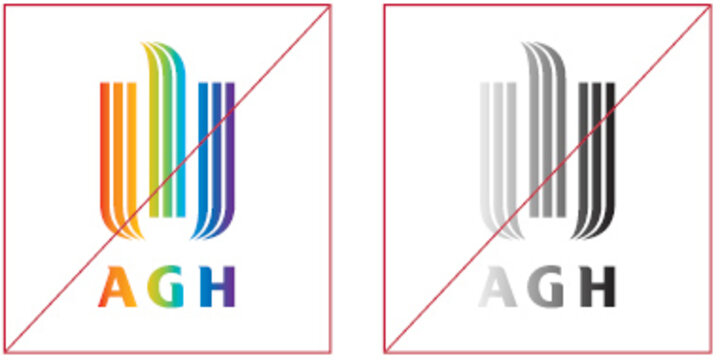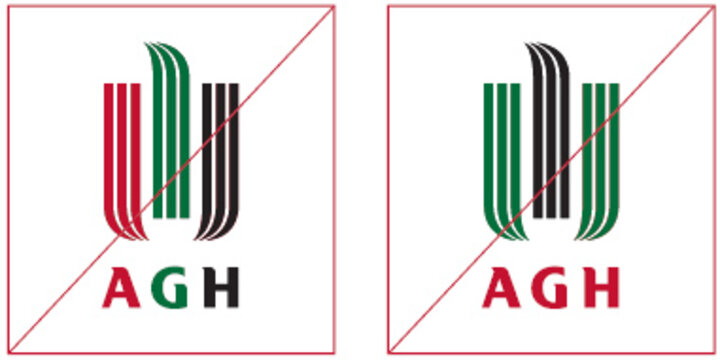The AGH University graphic symbol consists of an ideogram and a logotype.
The ideogram comprises three parts, each of which consists of three longitudinal elements (stripes). Symbolically, it represents an eagle, which is an allusion and a simplified form of the university emblem. The ideogram has three colours: green, black, and red. The logotype constitutes the initial letters of the university name. They are written in a font specifically designed for the AGH University.
When using the AGH University graphic symbol, observe the minimum space that separates the logo from other elements. See below for the method of calculating the minimum space around the logo.
